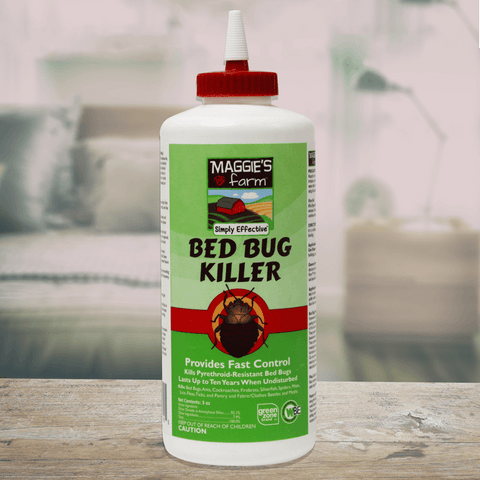Vacations are meant for exploring new places and trying tasty treats. A trip can quickly take a turn for the worse when bed bugs try to join in on the fun. Bed bugs like to hitch a ride with unsuspecting travelers. When people get home from a trip, they’re hit with a full-blown bed bug infestation. We’ve gathered information to help ensure uninvited guests don’t follow you home after your next trip.

Bed Bug 101

In order to prevent a bed bug infestation, it’s important to know how to identify them. Bed bugs are small insects that can grow up to 5 mm. They have an oval-shaped body that is flat, and they are wingless. As an adult, they are brown. However, their body can take on a reddish hue after feeding. Bed bug nymphs are smaller than adults and are white or tan. They will turn brown after they have their first blood meal.
Bed bugs feed on blood to obtain the nutrients they need to survive. Humans tend to be their primary target, but they will feed on animals. These bugs aren’t active during the day. Instead, they scurry around at night in search of a meal.
Their biting can often lead to red marks on your skin. They target areas that are most exposed while you’re sleeping like your legs and arms. These bites will typically be grouped together and can sometimes become itchy.
Why Are Bed Bugs Found in Hotels?
Though traveling is supposed to be fun, bed bugs can leave you questioning why you decided to leave your house. Hotels, from 1-star to 5-star facilities, are an ideal location for bed bugs because they offer plenty of opportunities for blood meals. The large volume of guests that come and go increases the chance of creating new bed bug invasions.
These bugs are small and flat, which makes it easy for them to hide. Bed bugs slip into cracks and crevices on the mattress, bed frame, and furniture. They can also easily hide in bedding and carpet.
How Far Can a Bed Bug Travel On Its Own?

Bed bugs can travel several feet on their own to find a blood meal. However, with some help they can travel many miles. Bed bugs can easily slip into luggage or clothes laying on the floor. If you aren’t looking for them, they’ll remain hidden, which allows them to be transported to new locations.
Not only do they travel with you, they rapidly reproduce. Bed bugs lay eggs each day and can produce up to 500 eggs in their lifetime. This can quickly lead to a serious infestation.
Tips to Avoid Bed Bugs When Traveling
A bed bug problem can be worrisome, but the good news is that there are things you can do to keep them from bugging you on vacation. Though it may be tempting, you don’t want to place your suitcase on any furniture when you walk into your room. Keep your bags in an area with tile flooring, like the bathroom, since bed bugs are unlikely to hang out here. Placing your luggage in plastic bags can help to keep bugs out of it.
How Do I Check for Bed Bugs When Traveling?

Before settling into your hotel room, you’ll want to ensure bed bugs aren’t lurking nearby. Carefully examine areas where bed bugs like to hide. Pull back the sheets and check the mattress and seams for bed bugs. You’ll want to look for dark stains on the mattress and the sheets because these could be bed bug excrements.
Take some time to examine the headboard and other furniture in the room. These pests are excellent at hiding, so make sure to do a thorough search.
What Should I do if I Find Bed Bugs When Traveling?
If you suspect a bed bug infestation, alert a hotel employee. You should always ask to change rooms. Bed bugs can easily travel to adjacent rooms, so make sure you move to an area that is distanced from the infested room.
If bed bugs happen to follow you home, you’ll want to quickly and efficiently treat the problem. Wash and dry all your clothes and bedding on high heat. Vacuum your room and your suitcase and empty it in a plastic bag before throwing it away in a tightly sealed trash can.
How to Get Rid of Bed Bugs

In addition to treating your clothing and suitcase, you’ll also want to treat your home. Applying a dust, like our Bed Bug Killer, will help to eliminate an infestation. The dust can be applied to the mattress and furniture. Using a paintbrush will help you to reach any cracks and crevices where bed bugs are hiding. If left undisturbed, the dust will remain effective for up to ten years.
You can also use a spray, like our Bed Bug & Flea Killer, which will kill bed bugs and their eggs. Eliminating a bed bug infestation can be difficult, so it’s important to remember that it may require multiple treatments.
Bed bugs can quickly become a serious problem, but they don’t have to ruin your summer vacation. Taking the time to examine your room can keep bed bugs from joining you on your journey home. If you are dealing with a bed bug infestation, we have your back! Check out our Maggie’s Farm Simply Effective™ Pest Control products.
